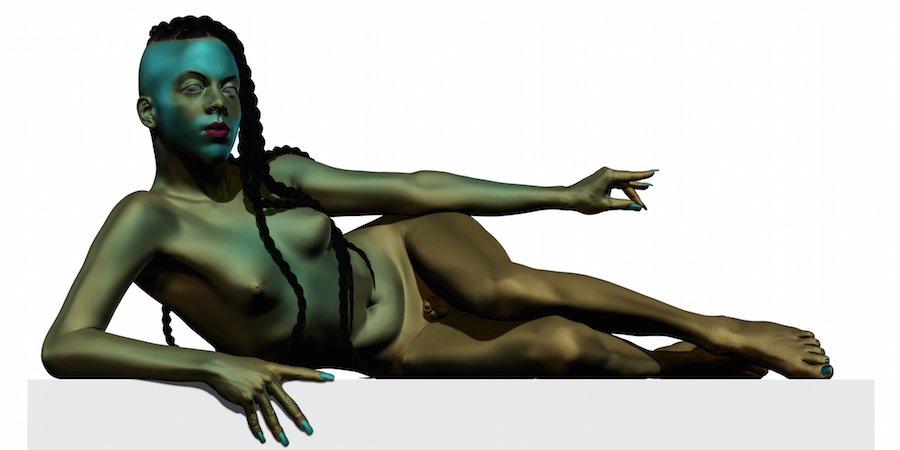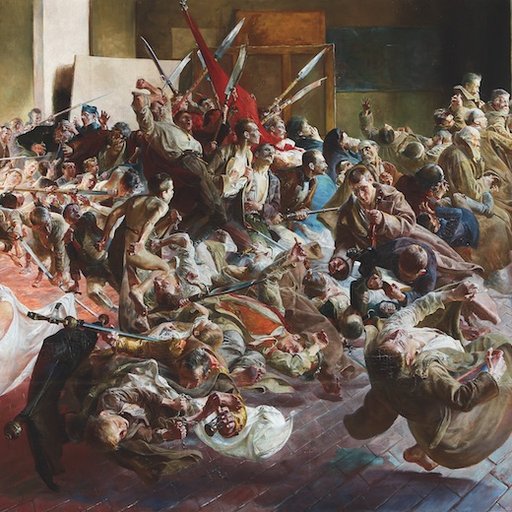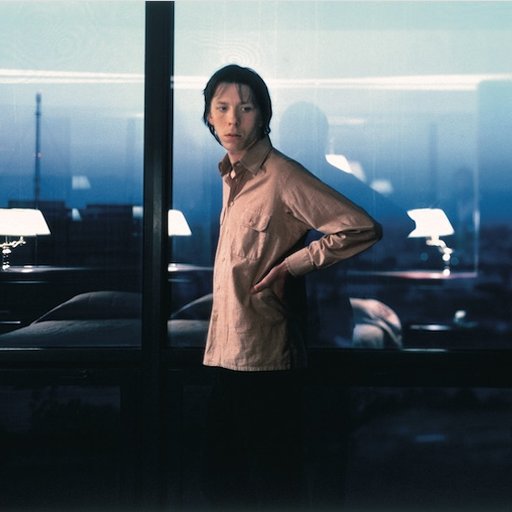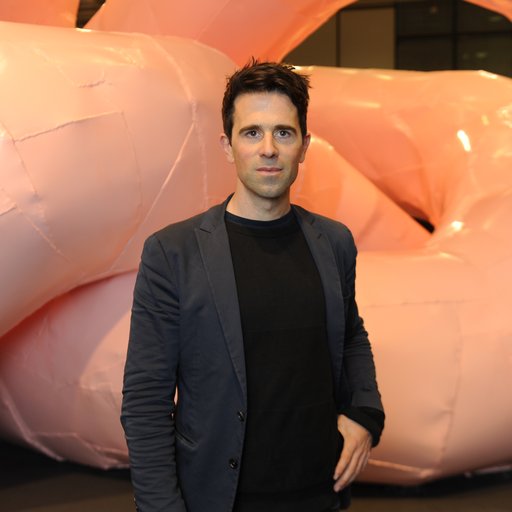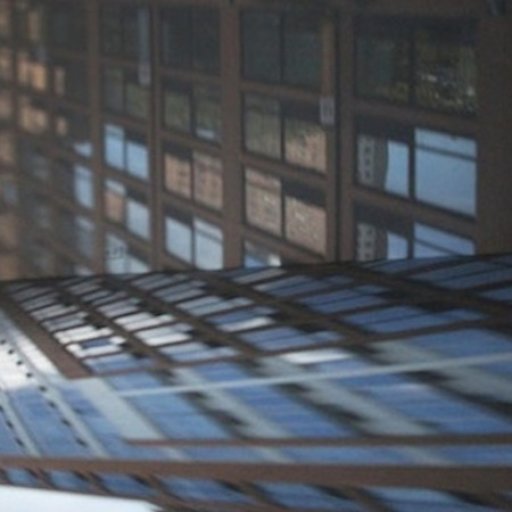Finally, a major show has arrived that is bound to shift the artistic conversation away from the market-driven, Restoration Hardware-esque phenomenon of decorative abstract paintings produced at mass scale and toward something that actually matters. Given the elliptical and vaguely threatening name “Surround Audience,” the New Museum’s Triennial, curated by Lauren Cornell and the video artist Ryan Trecartin, features the work of 51 artists and collectives from across the globe whose work addresses the peculiar conditions of contemporary life in the Internet era. Prepare to be spooked.
While the curators sidestepped the strict age range of the show’s famous “Younger Than Jesus” predecessor in favor of a cohort of artists Trecartin describes as simply “emerging into culture,” the participants in the show are largely late-‘70s/early-‘80s babies whose worldviews were Bat-Mitzvahed by “Terminator 2: Judgement Day,” the fall of the Berlin wall, personal computers, the Gulf War, the Rodney King riots—and who now find themselves (deja vu times a million) in an era of ubiquitous screens, ISIS, Oculus Rift, Piketty, and racial oppression and unrest erupting, heartbreakingly, under a historic black president. (One thing that has remained remarkably consistent, meanwhile, is the applicability of Fredric Jameson’s 1991 text Postmodernism or, The Cultural Logic of Late Capitalism, which presents observations about the status of the arts in a time of globalism, widening class divides, and the “effacement… of the older (essentially high-modernist) frontier between high culture and so-called mass or commercial culture” that remain exceedingly on-point today.)
Why is the work of these artists important? Consider the fact that while the FDA enforces stringent requirements for testing and trial-running even the most innocuous drug before it goes to market, the tech sector has no such precautionary requirement, allowing it to release life-altering devices into the global populace at a remarkable clip and let their attendant side effects reveal themselves in real time. Serving as a kind of collective patient zero for these innovations, the artists in this show express both acute paranoia about the rate of technological change (“The present feels more future than ever,” DIS Magazine notes in the catalogue) while at the same time excitement about the new possibilities for reinvented forms of autonomy, political action, and culture jamming. The strategies they employ cut across and mash up mediums; these artists are platform agnostic to a thrilling degree. An encouraging number of them seem to believe in the capacity of art to introduce change and create alternatives. In other words, these are people who have something—not just aesthetically, art historically, or careeristically—at stake.
Much of the excitement around the show derives from the inspired choice of curators. As the former editor of Rhizome and now a New Museum curator, Cornell has given early exposure to the digital vanguard for years while simultaneously moving to preserve the fragile and increasing venerated historical work of early Net and HTML artists, which are the embryonic expressions of several of the Triennial’s themes; as the pioneer whose breakthrough videos with Lizzie Fitch essentially forged a new aesthetic language to describe the traumas and liberations of online life, Trecartin is arguably the most transformative artist of his generation. His preoccupations with the mutability of the body and identity are similarly reflected in the work of many artists in the show.
Because so much of the exhibition lies in the realm of sci-fi, it’s bound to perplex at least a good chunk of visitors—and people are already comparing it to Elisabeth Sussman's fabled, notorious 1993 Whitney Biennial, which served up an bracing dose of identity politics to an unprepared audience and drew an affronted response from critics hoping for safer fare. (Michael Kimmelman will always be remembered for writing “I hate the show.”) Like that show, this survey is overdue. To help viewers navigate the Triennial, here is a quick-and-dirty guide to some of the themes and ideas to look out for in the show.
Let’s just get this out of the way. Coined by the artist Marisa Olson, “Post-Internet” art is a confusing yet useful term that people just love to hate, and which can be succinctly described as pertaining to work made by people for whom the Internet and all of its tools are kind of no biggie, in the same way that the revolutionary fracturing of the picture plane by the Modernists was taken as a given by the Postmoderists. Post-Internet art still employs the Internet, it just doesn’t have that wow-look-at-me-I’m-making-art-with-the-Internet-mom factor. Often these works are object-based, and typically they’re created with digital tools—like Oliver Laric’s 3-D-printed “ersatz” copies of classical statuary.
SPECULATIVE REALISM
A voguish topic in both philosophical and artistic circles these days, speculative realism is a rejection of the belief by Wittgenstein and other “correlationist” thinkers who held that something has to both Think and Be in order to fully exist and have a self. Instead, speculative realists postulate that this is too human-centric a concept of existence, and that non-thinking things can be imagined as having a kind of self too—a paradigm shift that some view as emancipatory. A long-lost descendant of old-fashioned animism, this school of thought is related to posthumanism, another voguish concept in art circles that theoretically accords a kind of self to cyborgs and the like (á la Blade Runner).
How does this relate to the Triennial? Well, it’s a lens through which to see the way some artists are using objects, for one thing. In Aslı Çavuşoğlu contribution, Long Ago Person Found, she marshals objects related to unmarked graves (often in zones of political conflict) to mutely bear witness of their owners’ lives; artists like DIS Magazine, Antoine Catala, Trecartin routinely allude to the posthuman; the Argentine artist Eduardo Navarro is going to do his very best to become a turtle, meditating for days in order to erase his human brain before entering a homemade turtle shell and crawling across New York; the dancer and choreographer Geumhyung Jeong does pas-a-deux with objects that rely on the tension of a battle of wills between them.
BODY PANIC 2.0
What’s a body for anymore? Art has always used the human form as both a subject and an index, depicting people in various interesting states and occupying space in a way that relates to the viewer. Now, through the virtualization of so many aspects of life, the fixity of the body has become less sure, and its primacy has come under attack—even as technology provides abundant new methods of monitoring, porting, servicing, and satisfying the body 24/7. A good number of the artists in the show explore this predicament, mining it for opportunities and conveying its unease.
Avatars are big. Ed Atkins’s videos, for instance, digitally render people who confess, threaten, and otherwise convey strong emotions through virtual bodies that are close to realistic but just off enough as to be terrifying, setting off spasms of uncanny-valley revulsion; the artist and standup comedian Casey Jane Ellison does routines with Second Life-esque digital and sculptural stand-ins. The artist Frank Benson creates photographs and high-gloss sculptures that recreate—and improve—the body synthetically, while Josh Kline has 3-D-printed portraits of workers that fuse them with the technologies related to their jobs, and he has an unsettling video in the show that maps the faces of people on social media onto the bodies of off-duty police officers who read their feeds out loud. The painters Avery K. Singer and Sascha Braunig position bodies in dysmorphic settings that, it so happens, recall the digital landscapes of movies like “Tron” and “Lawnmower Man.”
In the physical world, the transgender performance artist Juliana Huxtable, Benson’s sometime model, employs her own body as a plastic vehicle for “embodying alternatives to constrictive conventions or biases,” as the catalogue puts it, while the choreographer niv Acosta makes work that exposes the gulf between the visible body and the interior self. The potentials of virtual reality, the most on-the-nose expression of this frontier, are meanwhile explored in the work of Daniel Stigma Mangrané, who is providing Oculus Rift headsets to teleport viewers into a version of Brazil’s threatened Mata Atlântica rainforest.
BOWING OUT & FIGHTING BACK
We all know that surveillance has become an unprecedentedly pervasive part of our lives, whether it be voluntarily (via our social-media feeds), semi-voluntarily (via targeted advertising), and involuntarily (thanks to local and foreign intelligence agencies). Our images, which are constantly captured and stand in for us in our online lives, expose manifold vulnerabilities. Luckily, artists happen to specialize in images, and several in the show provide ways to evade or take advantage of this situation. The brilliant Hito Steyerl has specialized in drawing attention to the oppression of the image, using essays, videos, and installations to explore how poor-quality images express caste divisions and offering strategies for “how to disappear.”
The collective Exterritory has contributed a video to the show proposing a way to thwart Israeli surveillance at security checkpoints on the Palestinian border by sending images across by carrier pigeon. The artist Aleksandra Domanović mines the imagery of popular mass media for clues about where her society is headed. The sound artist Ashland Mines, on the other hand, sought to escape this condition into an autonomous zone by creating an underground dance club where one could experience “total freedom.”
Other artists, meanwhile, use their work to expose the contours of nefarious systems. Li Liao did a remarkable performance that consisted of embedding himself for five months as a worker at Apple’s infamous Foxconn factory in China, which is known for its excruciating labor conditions, and then spent the whole of his earnings on an iPad. Nadim Abbas built a biohazard bunker at the museum that resembles an ordinary apartment as a commentary on the way that we have learned to live normal lives amidst the myriad threats of the present age. Josh Kline’s work, too, has a sharply dissident political edge.
IDENTITY POLITICS IN AN EXPANDED FIELD
Since 1993 Whitney Biennial’s investigation of identity politics in American art, the conversation has expanded in a remarkable way—as globalization has brought the world closer together, there are many more identities jostling up against one’s own that need to be accounted for. The coiner of the term “Gulf Futurism,” Sophia Al-Maria has made work across mediums dealing with the psychic dissonance of growing up between Washington state and Qatar, and her video in the show explodes conventions about the repressed lives of Middle Eastern women by showing young Arab girls dancing around their bedrooms in evident full possession of their bodies. The Nigerian artist Njideka Akunyili Crosby’s collage-esque paintings recount the fractured essence of the immigrant experience. Luke Willis Thompson then brings things painfully close to home with work documenting the way the police, the courts, and prisons too often burlesque the rights of young black men.
CORPORATIONS
When Mitt Romney said that “corporations are people too,” and when the Supreme Court decided that money is a form of speech, they may have unknowingly inspired a generation of artists. In a time when anxieties about selling out have been replaced by strategies for cashing in, being a brand, acting as a startup, and flexing one’s network across platforms, several of the artists in the show have adopted the guise of super-savvy companies. DIS Magazine, the most famous of these, consists of a group of artists (some of whom have collaborated with Trecartin) who produce an often-hilarious editorial website, collaborate with designers, program music festivals, headline corporate branding events (such as a Red Bull-sponsored exhibition/retail store), and curate exhibitions, like the upcoming Berlin Biennale.
K-Hole works as a kind of conceptual branding agency (they’re responsible for the term “normcore”) and one of its members, Emily Segal, actually used to work for the high-powered branding agency Wolff Olins and currently serves as creative director of Genius; they’ve designed the Triennial’s catchy advertising campaign, featuring an anthropomorphic pill and slogans like “I’ll Triennial Once.” Antoine Catala’s contribution to the show consists of a new graphic symbol for empathy that he hopes will infiltrate the popular consciousness with the same success as the peace sign or the smiley face. These artists fascinatingly tread the line between being successful in business while at the same time critiquing their formats from within, often with a sly accellerationist agenda. Vice magazine can be seen as their spiritual godhead.
POETRY
When the market can recuperate anything, even Marina Abramovic, artists seeking a bit of outside space have been looking more and more to poetry, and why not? It has history, unimpeachable integrity, the virtue of being the most irreducible form of creativity, a convenient parallel to HTML language, and pretty much zero chance of making any money. To accompany the show, the artist and critic Brian Droitcur has assembled a book of poetry with contributions from 70 writers, several of whom—Steve Roggenbuck and Rachel Lord among them—are featured in the exhibition as well.











